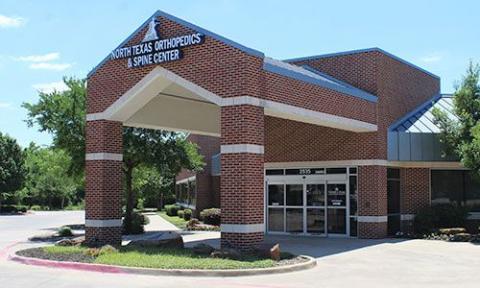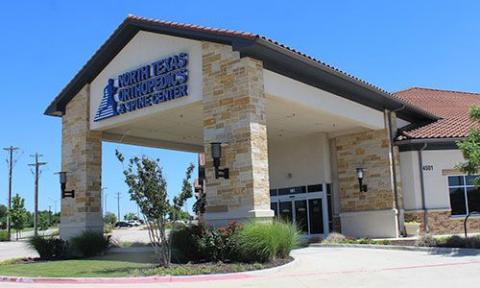Back pain shouldn’t control your life, but fear of major spine surgery often keeps patients suffering longer than necessary. Minimally invasive spine surgery techniques provide effective treatment with smaller incisions, less blood loss and rate of infection, faster healing and less disruption to your daily life.
What Makes Spine Surgery “Minimally Invasive”?
Minimally invasive spine surgery achieves surgical goals while applying minimal disruption to your body’s natural anatomy. Rather than large incisions cutting through significant muscle tissue, these techniques use specialized technology and guidance systems to access the spine through smaller incisions with minimal damage to surrounding muscles, tendons and ligaments.
“The whole goal of minimally invasive spine surgery is primarily to have faster recovery for our patients without sacrificing any of the clinical success of why we did the surgery in the first place,” explains Dr. Briseño at North Texas Orthopedics & Spine Center.
Treatable Conditions
Most spine conditions can now be addressed through minimally invasive methods. These techniques work well for common spine problems that traditionally required major surgery. However, complex cases like tumor removal or major revision surgeries may still require traditional approaches.
Patient Experience and Recovery
The primary advantage is faster return to normal activities without compromising surgical success. Patients experience less post-operative pain, smaller scars, reduced blood loss, and shorter hospital stays compared to traditional open surgery.
Success depends heavily on patient engagement and understanding of post-operative care. The reduced surgical trauma means your body can focus energy on healing rather than recovering from extensive tissue damage.
Advancements in Technology
Modern minimally invasive spine surgery increasingly incorporates robotic assistance, particularly for complex cases requiring precise hardware placement. Robotics helps surgeons plan procedures using pre-operative CT scans and verify proper implant positioning during surgery.
“Robotics has allowed us to do more minimally invasive techniques for more complicated cases that we maybe couldn’t have done before,” notes Dr. Briseño. This technological expansion means patients who previously required traditional open surgery may now be candidates for minimally invasive approaches.
Determining Candidacy
Candidacy depends on several factors: anatomical considerations, condition type, overall health status, and patient engagement. Your spine surgeon evaluates these factors during a consultation to determine the best surgical approach for your specific situation.
Not every patient automatically qualifies for minimally invasive techniques, but most patients today expect these approaches as standard care.
Future Developments
Two developments are shaping the future of minimally invasive spine surgery:
Endoscopic surgery makes incisions even smaller than current techniques while further reducing recovery time. Though the learning curve is significant for surgeons, this approach is on its way to becoming the standard of care.
Virtual reality-assisted surgery is being developed at major academic centers, merging patient imaging data with real-time surgical visualization. This technology allows surgeons to see inside patients three-dimensionally without additional tissue dissection.
Making the Right Choice
Modern spine surgery aims to achieve maximum results with minimum consequences. However, success requires ensuring your surgeon has extensive experience with these techniques and uses them appropriately for your specific condition.
The goal remains the same regardless of technique: relieving symptoms and restoring function. Minimally invasive surgery simply allows this to happen with less disruption to your life and faster return to activities that matter to you.
Your Path to Better Spine Health
If persistent back or neck pain is limiting your daily activities, minimally invasive spine surgery might offer the relief you’ve been looking for. Dr. Briseño at North Texas Orthopedics & Spine Center can evaluate your condition and discuss whether these advanced techniques are appropriate for your situation. Schedule your consultation today.


